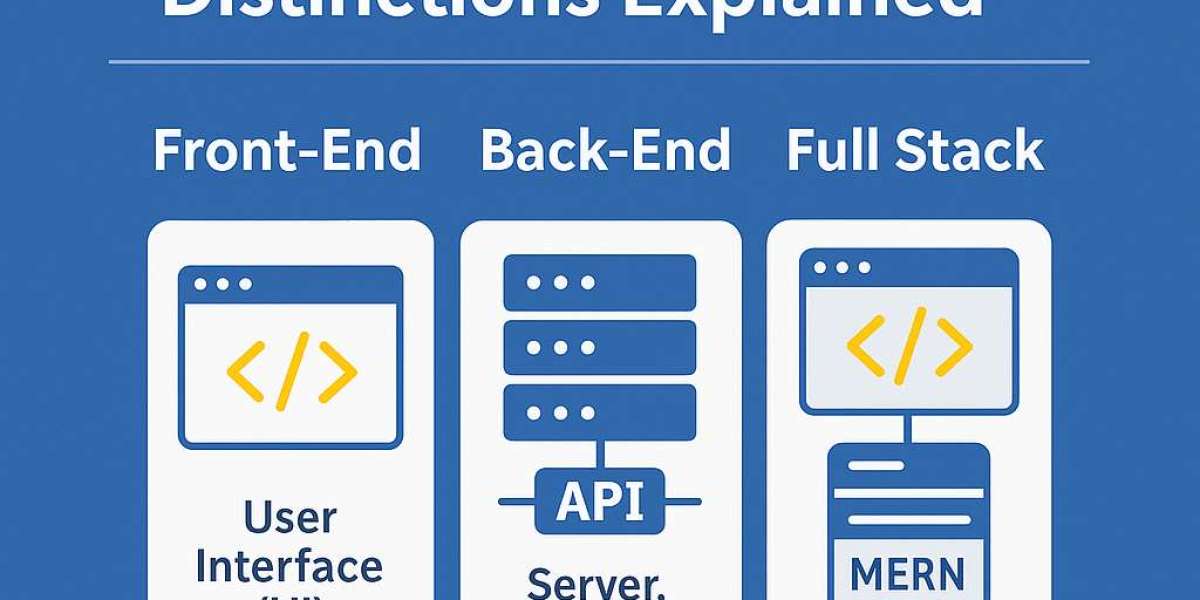In the world of web development, three terms are commonly thrown around: Front-End, Back-End, and Full Stack. Whether you're considering a career in tech, working with a development team, or just curious about how websites and apps work, understanding the differences between these roles is essential. In this post, we’ll break down what each of these roles entails, how they interact, and what makes them unique.
Read More: Front-End vs Back-End vs Full Stack: Key Distinctions Explained
What Is Front-End Development?
Front-end development focuses on the visual and interactive parts of a website or application — the part users see and interact with directly.
Core Responsibilities:
Designing and coding user interfaces (UI)
Ensuring responsiveness across devices
Enhancing user experience (UX)
Collaborating with designers to bring mockups to life
Common Technologies:
Languages: HTML, CSS, JavaScript
Frameworks/Libraries: React, Angular, Vue.js
Tools: Webpack, Sass, Git, Figma (for design handoff)
Example:
When you click a button, scroll a page, or fill out a form — that’s the front-end in action.
What Is Back-End Development?
Back-end development is all about the server-side logic — what happens behind the scenes when users interact with a web page.
Core Responsibilities:
Managing databases and servers
Building APIs
Implementing authentication and authorization
Ensuring application security and scalability
Common Technologies:
Languages: Python, Java, PHP, Ruby, Node.js
Databases: MySQL, PostgreSQL, MongoDB
Frameworks: Express.js, Django, Spring Boot
Tools: Docker, AWS, Git, Postman
Example:
When you log into a website and your credentials are verified, the back-end is handling that process.
What Is Full Stack Development?
Full stack developers are proficient in both front-end and back-end development. They can build and maintain entire web applications from start to finish.
Core Responsibilities:
Designing and implementing complete web solutions
Bridging communication between front-end and back-end
Managing project architecture
Troubleshooting across the tech stack
Common Stack Examples:
MERN: MongoDB, Express.js, React, Node.js
LAMP: Linux, Apache, MySQL, PHP
MEAN: MongoDB, Express.js, Angular, Node.js
Benefits:
Versatility and flexibility
Ideal for startups and small teams
Better understanding of how all parts of a system work together
Comparing the Roles at a Glance
| Aspect | Front-End | Back-End | Full Stack |
|---|---|---|---|
| Focus | User Interface (UI) | Server, Database, Logic | End-to-End Development |
| Key Skills | HTML, CSS, JS, UX/UI | APIs, DBs, Auth, Logic | Combines both skill sets |
| Tools | React, Vue, Figma | Node.js, SQL, Docker | MERN, LAMP, GitHub |
| User Interaction | Direct | Indirect | Both |
| Career Path | Front-End Developer | Back-End Developer | Full Stack Developer |
Which Path Should You Choose?
Choosing between front-end, back-end, or full stack depends on your interests and career goals:
Creative + Visual Thinker? Front-end might suit you best.
Logical + Data-Driven? Back-end could be your thing.
Want to Do It All? Consider full stack.
Visit Here: https://www.fusion-institute.com/front-end-vs-back-end-vs-full-stack
Final Thoughts
Web development is a collaborative process, and each role plays a crucial part in building modern digital experiences. Whether you're designing sleek interfaces, writing powerful server logic, or bridging the gap between both, understanding the distinctions between front-end, back-end, and full stack development is the first step to finding your place in tech.



